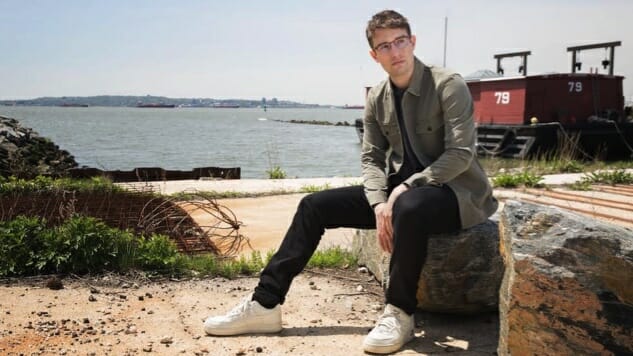San Fermin: The Cormorant and Turning 30
Photo by Denny Renshaw, courtesy of Sony Music
In 2018, after his band San Fermin had finished up the touring for its third album, Ellis Ludwig-Leone wanted to take some time off to write the fourth. He was proud of the first three albums, but he was approaching the boundary of 30 and he wanted to take stock of where he’d been and where he was going.
To do that, he needed to get away from his home turf in Brooklyn’s Prospect Heights neighborhood and its constant onslaught of texts to answer and events to attend. Iceland seemed a good getaway; he’d enjoyed his previous visits there and he accepted an invitation from an Icelandic friend to stay in Isafjordur on the island’s northwest corner.
“I like to get away when I’m generating material for the band,” Ludwig-Leone says over the phone from his Brooklyn apartment. “I need to shake things up. When you get outside of yourself a bit, you look at things with a different perspective. You’re not stuck in the daily rhythms of your normal life; you have 24 hours to devote to the project. The landscape always seeps into the writing.”
He’d begin each day in Iceland by taking a walk that led to an old fish-processing plant on the town’s harbor. The boxy red building had two block-and-tackle contraptions for lifting fish out of the boats. Silhouetted against the crystalline sky of the Greenland Sea, these hanging chains resembled gallows (as seen in the photo above).
Always perched nearby were a handful of cormorants, similarly morbid-looking birds with long, snake-like necks and wings that they often spread to dry as if they were messengers of death opening their black cloaks. After his walk, with these images in his head, he’d return to his keyboard and wrestle with what he wanted to say on the next record.
“We’re in this weird time in America right now,” Ludwig-Leone says, “and a lot of artists I really like are reacting to that here and now with a social message. I also feel that impulse, but when I sat down to write, I realized that I just don’t work that way. I have to deal with it by connect to something older and deeper. But how do I do that without sticking my head in the sand and doing a record just for my own sake?
“Maybe the answer was to do something a little more surreal, a little more literary, more of a story than the last record. I was thinking of Pan’s Labyrinth, those sort of weird adult fairy tales that double as metaphors for our lives. And I thought of those cormorants.”
That led to San Fermin’s new album, The Cormorant I, which will be followed by The Cormorant II next spring. The title track opens the proceedings with bird calls blending in with the sounds of children at play, thus cementing the connection between nature and childhood. Several female voices describe someone awakened by playground voices and morning light but still remembering a dream about “ a great black cormorant, his wings … vast and open wide [with a] razor beak and diamond eyes.”
In the dream, the bird spoke in a harsh voice “rising from an ancient sea caked in salt and fish scales,” and that sound is suggested by the sawing cello, sustaining baritone sax and rumbling drums below. “On this morning you will die,” the cormorant announces, “but before then you must try to show me what you were.” Here is an oracular prediction and a threatening command to justify the subsequent songs about the dreamer’s youth. This framing device is far more dramatic than, say, a similar request from a beard-stroking therapist.
Each of the songs that follow presents a different childhood memory that leaves the narrator wondering why things didn’t turn out as hoped. “Tell me, Father,” a young boy asks on “Cerulean Gardens,” “Did I do it right? Where did I go wrong again?” “Why do you have to be a goddamned saint?” a twentysomething woman asks her lover on “Saints.” “Don’t you see it only makes this hard?”
“We all have these memories and concerns about the nature of truth,” Ludwig-Leone suggests. “You think you’ve lived a certain life and been a certain kind of person, but the only thing connecting you to that is memory is the narrative you tell yourself. There’s a line in ‘The Hunger,’ ‘How did I get like this? I was such a nice kid.’ I think that has a resonance beyond me. It was time for a check-in at nearly age 30: Who am I and how have I changed?”
-

-

-

-

-

-

-

-

-

-

-

-

-

-

-

-

-

-

-

-

-

-

-

-

-

-

-

-

-

-

-

-

-

-

-

-

-

-

-

-








































